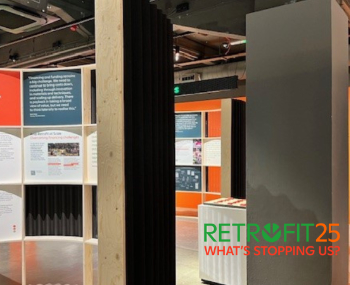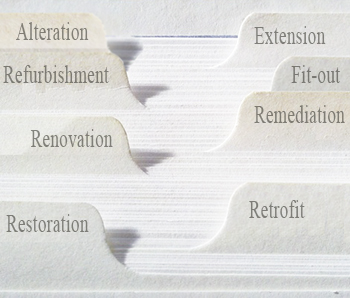Float glass
Contents |
[edit] Introduction
Float glass (sometimes referred to as clear float glass) is glass that that has been manufactured from molten glass floated on the surface of a heated liquid of greater density such as tin (or in the past, lead) and then cooled. The result is a smooth glass of uniform thickness that gives undistorted vision, high light transmission and optical clarity.
Float glass is the most widely used form of glass for consumer applications. While in a semi-molten, waxy state, it can be easily shaped and formed to suit a variety of uses. Once made, it can be further processed to create other types of specialist glass, such as toughened glass, laminated glass and acoustic glass.
[edit] Manufacture
The first commercial application of the float glass process (the ‘Pilkington process’) of forming a continuous ribbon of glass floated on a molten tin surface was devised in the mid-1950s by Sir Alastair Pilkington and Kenneth Bickerstaff at Pilkington Brothers in the UK. The glass was flattened by its self-weight and flowed through the process under the influence of gravity. However, it was not until 1960 that the bulk process was made a commercial success.
The raw materials that go into float glass mainly include silica sand, soda ash, limestone and other ingredients. Once mixed, the materials are fed into a furnace with any recycled glass that may be included and heated to as high as 1,500°C to become a molten mass. It is then cooled before being poured into a tin bath.
Smoothness on the metal side is imparted by contact with the molten tin and on the upper surface (the air side) by polishing with fire. No additional polishing is required. Poured onto the molten tin in ribbons at an initial temperature of around 1,200°C, the speed of the glass through the process can be left to gravity or by top roller gears on the glass surface propelling it forward.
At around 1,100°C, the glass enters a lehr oven to be annealed i.e allowed to cool very gradually. This controlled cooling allows any internal stresses in the glass to dissipate. When it emerges from the oven, the glass is further cooled by jets of air after which scanners seek any imperfections which, if found, will result in the glass being discarded or recycled. Once at room temperature, the glass is trimmed and cut to suit customer requirements, after which the sheets are packed for shipping.
[edit] Applications
Because it results in a perfectly flat surface, float glass can be used in most flat-glass applications. It is available in a wide range of sizes and thicknesses for use in mirrors, automobile applications, windows, doors, insulated glass, light fittings and so on.
[edit] Related articles on Designing Buildings
Featured articles and news
A five minute introduction.
50th Golden anniversary ECA Edmundson apprentice award
Showcasing the very best electrotechnical and engineering services for half a century.
Welsh government consults on HRBs and reg changes
Seeking feedback on a new regulatory regime and a broad range of issues.
CIOB Client Guide (2nd edition) March 2025
Free download covering statutory dutyholder roles under the Building Safety Act and much more.
AI and automation in 3D modelling and spatial design
Can almost half of design development tasks be automated?
Minister quizzed, as responsibility transfers to MHCLG and BSR publishes new building control guidance.
UK environmental regulations reform 2025
Amid wider new approaches to ensure regulators and regulation support growth.
The maintenance challenge of tenements.
BSRIA Statutory Compliance Inspection Checklist
BG80/2025 now significantly updated to include requirements related to important changes in legislation.
Shortlist for the 2025 Roofscape Design Awards
Talent and innovation showcase announcement from the trussed rafter industry.
OpenUSD possibilities: Look before you leap
Being ready for the OpenUSD solutions set to transform architecture and design.
Global Asbestos Awareness Week 2025
Highlighting the continuing threat to trades persons.
Retrofit of Buildings, a CIOB Technical Publication
Now available in Arabic and Chinese aswell as English.
The context, schemes, standards, roles and relevance of the Building Safety Act.
Retrofit 25 – What's Stopping Us?
Exhibition Opens at The Building Centre.
Types of work to existing buildings
A simple circular economy wiki breakdown with further links.
A threat to the creativity that makes London special.























